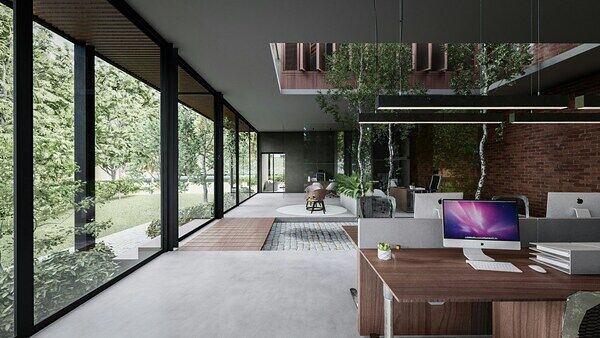Beyond Software: Enhancements to Make a Better Workspace for Your Employees (Collaborative post)

An ideal work environment involves more than having top-of-the-line software and technology tools. Although these can greatly contribute to efficiency and productivity, other elements play an important role in creating a conducive workspace environment. From ergonomic furniture to ventilation systems, small changes can make an enormous difference in employee satisfaction and performance.
Ergonomic Furniture to Elevate Comfort
Comfort is closely linked with productivity. By investing in ergonomic furniture such as adjustable desks and supportive chairs, the ergonomic designs aim to promote happiness while decreasing injury risk Ultimately leading to less sick days, higher sense of well-being and reduced sick leave costs for staff members. While such upgrades might seem minor, they'll speak volumes about your commitment to employee health.
Let There Be Light: The Importance of Good Lighting
Office lighting may often be taken for granted, but its importance cannot be overstated in creating an atmosphere conducive to work. Lighting impacts everything from the person’s mood to their eye health. Poor lighting can even exacerbate headaches and fatigue. Natural light should always be maximized where available while LED or nano lighting solutions that simulate daylight make employees more alert, motivated, and less likely to commit errors. When combined together these solutions can pave the path toward enhanced productivity.
Air Quality and Ventilation: Breathing Easy
Have you ever found yourself trapped in an uncomfortable space that sapped your focus? Proper ventilation facilitated by extractor fans or air purifiers is important in maintaining the air quality in the workplace. From controlling odors that hang in the air to decreasing pollution concentration levels for better employee health, creating an airy workspace is where innovation thrives.
Noise Management for a Tranquil Environment
Offices can be notoriously noisy environments, filled with the sounds of phones ringing, keyboards typing and intense discussions. While this noise might represent vitality and activity, it's important not to overlook the need for quiet and concentration. Utilizing soundproofing materials, white noise machines or designated silent zones is another way to manage office noise levels and provide employees with peace of mind while working without distraction. Also, peaceful surroundings encourage clear thinking and boost creativity.
A Splash of Green: Incorporating Plants
Sometimes it takes just a splash of green to change an office environment for the better. Integrating plants into the workspace has been shown to decrease stress levels, boost creativity, and even increase air quality. From succulents on window sills or large peace lilies in corners, greenery brings life and balance into even the most sterile environments.
The Power of Personalization
Allowing employees to customize their workspace can have a dramatic effect on employee happiness and pride of ownership over their work. Such personalization could include family photos, creative wall art or unique desk trinkets that reflect each employee's individuality. Creating an atmosphere in which employees feel relaxed yet invested in their tasks.
Conclusion
While technological innovations are indispensable in modern workplaces, small improvements to physical workspace design can have an even bigger effect on employee morale and productivity. Ergonomic furniture, appropriate lighting, air quality controls, noise management measures all play a part in contributing to employee well-being. In ways technology alone cannot achieve. Creating a better work environment means going beyond mere functionalism to form an environment in which employees feel valued, comfortable, and motivated to put forth their best effort on each job they perform. Make necessary upgrades and watch as the productivity soars with every upgrade completed.



